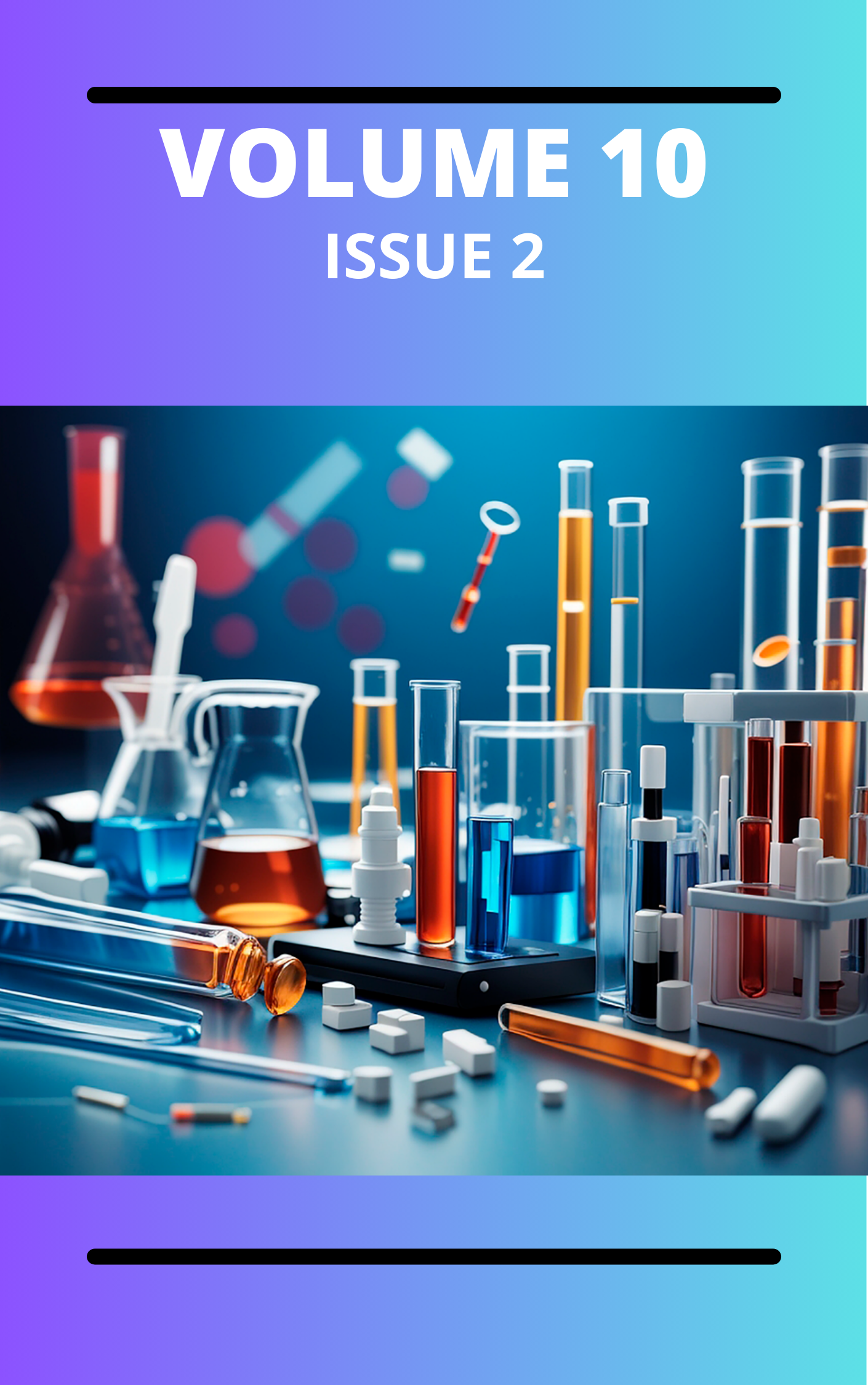Investigation of the Adsorptive And Inhibitive Properties Of Cucurbita Maxima Peel Extract And Halide Ions As Inhibitors For Stainless Steel in 1m H2so4 Solution
Keywords:
Metal, degradation, protection, Cucurbita maxima wasteAbstract
In consideration of the need to populate the research database with information on green corrosion inhibition, the present study investigated the corrosion inhibition efficiency of various concentrations of Cucurbita maxima peel extract on Grade 304 austenitic stainless steel in 1 M H2SO4 using two basic analytical methods, namely gravimetric and electrochemical methods. The extract showed a progressive increase in inhibition efficiency with an increase in concentration but with a decrease in temperature, the efficiency was observed to decline. employment of synergistic combination of the extract with iodide ions extended the maximum inhibition efficiency from 88.27 to 90.20 % for PCM with KI at 0.7 g/L extract concentration for 3 hours’ immersion time and an efficiency of 90.43% at 0.7 g/L concentration with KCl at 30 ⁰C. Evidences from the polarization curve indicated that C. maxima peel functions as a mixed-type inhibitor. The inhibition action of the peel extract is due to the adsorption of the extract compounds on the stainless-steel surface. The presence of the extract increased the activation energy of the corrosion reaction. The evaluated range for the ΔGads values confirmed that the adsorption is spontaneous and operated through a physical adsorption mechanism that best fitted the Langmuir adsorption model. . The scanning electron micrograph of the metal surface shows a smooth surface compared to the surface obtained for the control experimental set-up. The greatest efficiency was achieved using the peel extract with KI halide ion which shows that the peel of C. maxima is a very effective corrosion inhibitor on stainless steel in an acidic medium.
Downloads
Published
Issue
Section
Most read articles by the same author(s)
- Patricia Ese Umoru, Ameh David Onu, The Redox Reaction between Di-μ-Oxo-Tetrakis (2, 2’- bipyridine) – Dimanganese (III, IV) Perchlorate and 1, 3-Dihydroxybenzene in Hydrochloric Acid , Communication In Physical Sciences: Vol. 6 No. 1 (2020): VOLUME 6 ISSUE 1
- Nnabuk Okon Eddy, Rajni Garg, Femi Emmanuel Awe, Habibat Faith Chahul, Computational Chemistry studies of some cyano(3-phenoxyphenyl) methyl isobutyrate derived insecticides and molecular design of novel ones , Communication In Physical Sciences: Vol. 5 No. 4 (2020): VOLUME 5 ISSUE 4
- Femi Emmanuel Awe, Muhammad Dahiru Faruruwa, Hadiza Abba, Green Synthesis, Characterization and Antibacterial Activity of Zinc Oxide and Titanium Dioxide Nanoparticles Using Terminalia Catappa and Cymbopogon Citratus Leaf Extract , Communication In Physical Sciences: Vol. 7 No. 4 (2021): VOLUME 7 ISSUE 4
Similar Articles
- Vincent Oseikhuemen Odia-Oseghale, Joseph Odion Odia-Oseghale, Environmental Implications of Quarrying and Waste Management: A Case Study of Okhoro, Benin City , Communication In Physical Sciences: Vol. 12 No. 4 (2025): VOLUME1 2 ISSUE 4
- Okoche Kelvin Amadi, Onyinyechi Uloma Akoh, Godson Chukwudi Eric, Adsorption Studies on the Inhibitive Properties of Aqueous Extracts of Theobroma cacao (TC) Leaves on Mild Steel in 1.0 M HCl , Communication In Physical Sciences: Vol. 9 No. 3 (2023): VOLUME 9 ISSUE 3
- Faith Osaretin Osabuohien, Review of the Environmental Impact of Polymer Degradation , Communication In Physical Sciences: Vol. 2 No. 1 (2017): VOLUME 2 ISSUE 1
- N. B. Essien, Sorghum Waste as an Efficient Adsorbent for the Removal of Zn2+and Cu2+ from Aqueous Medium , Communication In Physical Sciences: Vol. 5 No. 2 (2020): VOLUME 5 ISSUE 2
- Felicia Uchechukwu Okwunodulu, Stevens Azubuike Odoemelam, Remediation of effluents polluted with toxic heavy metals using Cola nitida pod husk , Communication In Physical Sciences: Vol. 8 No. 4 (2022): VOLUME 8 ISSUE 4
- Attah Chuks Emmanuel, Gloria Chika Udeokpote, Ethanol Extract of Vernonia amygdalina Leaf as a Green Corrosion Inhibitor for Carbon Steel in Solution of HCl , Communication In Physical Sciences: Vol. 10 No. 3 (2023): VOLUME 10 ISSUE 3 (2023-2024)
- Joseph Jacob, Shinggu D. Yamta, Influence of Moisture Absorption on some Mechanical Properties of Groundnut Shell Powder Reinforced Waste LDPE Composites , Communication In Physical Sciences: Vol. 7 No. 4 (2021): VOLUME 7 ISSUE 4
- Richard Alexis Ukpe, Joint effect of halides and Ethanol Extract of Sorghum on the Inhibition of the Corrosion of Aluminum in HCl , Communication In Physical Sciences: Vol. 4 No. 2 (2019): VOLUME 4 ISSUE 2
- Nathaniel Atamas Bahago, Gideon Wyasu, Mary Gojeh, Optimization of Activated Carbon Preparation from Corncob Wastewater Treatment , Communication In Physical Sciences: Vol. 7 No. 2 (2021): VOLUME 7 ISSUE 2
- Attah Chuks Emmanuel, Removal of Cadmium Ion from Aqueous Solution by oyster-based Based Calcium Oxide Nanoparticles , Communication In Physical Sciences: Vol. 10 No. 3 (2023): VOLUME 10 ISSUE 3 (2023-2024)
You may also start an advanced similarity search for this article.




